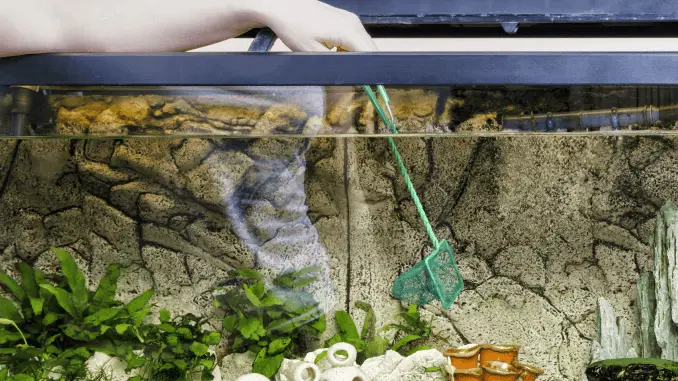
To ensure your fish stay healthy, it’s vital to ensure you keep the conditions of your tank optimal.
This requires routine maintenance and cleaning to help maintain the delicate ecosystem in your tank.
Water in your aquarium can easily become harmful to your fish if it is not maintained correctly.
By maintaining and cleaning your tank correctly, you won’t ever need to remove all of the water at once. In fact, by doing this, you kill all of the good bacteria that have built up.
If you are a complete beginner, you may think that it’s easier to clean a small tank or bowl; this is an incorrect assumption. The larger the aquarium the easier it is to keep the water stable.
To understand Why You Need to Clean Your Fish Tank, The Importance of Regular Cleaning, How Often Should You Clean Your Tank, Acceptable Aquarium Parameters, and How to Clean a Fish Tank in Five Easy Steps then continue reading.
Why You Need to Clean Your Fish Tank
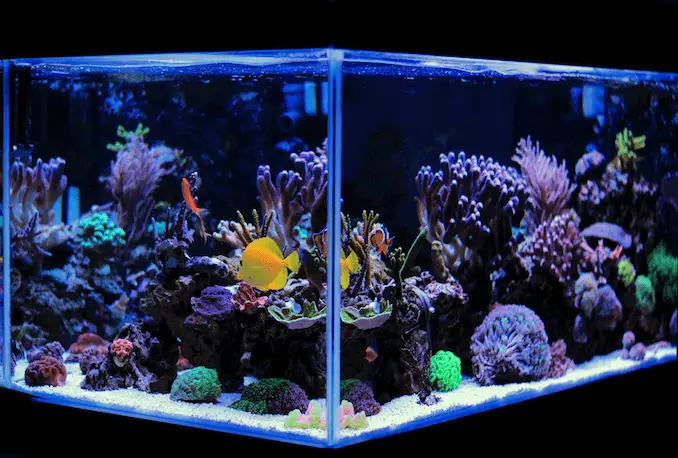
There are three goals you are trying to achieve when you clean your fish tank; these are known as the three Rs.
- Regulate the nitrogen cycle
- Remove dissolved and particulate organic compounds
- Replenish essential minerals
1. To keep the nitrates in low concentration
The nitrogen cycle is the process in which ammonia is converted by bacteria to nitrite and then to nitrate. Both ammonia and nitrite are toxic to fish, and so having bacteria colonies in your fish tank is essential to convert them harmful compounds to nitrate.
Nitrates are much less harmful to fish and can be removed by regular water changes.
Before you introduce any fish to a tank, ideally it will have been cycled; there are a number of different ways to cycle your tank. One of the better ways is to add artificial ammonia to your tank to start building up the bacteria colony which breaks down ammonia and nitrites.
2. To remove dissolved and particulate organic compounds
Organic compounds are defined by chemists as those that are made up of both carbon and hydrogen; (they can also contain other atoms too). Examples include sugars, fatty acids, vitamins, amino acids and proteins.
Organic matter is classified into dissolved organic matter (DOM) and particulate organic matter (POM).
DOM is defined as any organic material which can pass through 0.2 0 1.0 um filters, whilst POM will not pass through.
Organic matter includes any waste which is made as a natural by-product of having a tank full of fish that are regularly fed. Just like ammonia is broken down by the colonies of bacteria, so is food waste and other organic matters in your tank.
Plants in freshwater tanks can use some of these organics, and the rest can be controlled by regular water changes and cleans – we’ll look at this in-depth later on in the article.
3. To replenish minerals
When fish are kept in water with insufficient minerals, either too high or too low, this can result in osmotic stress, which can, in turn, lead to osmotic shock, and ultimately death.
Often when fish keepers add water to their tank, they use RO water, that is water, which has been through the reverse osmosis process. This process removes the vast majority of tap water impurities, but it also removes the essential minerals which your fish need.
Therefore you should use a product to add these essential minerals back into the aquarium.
Regular Maintenance
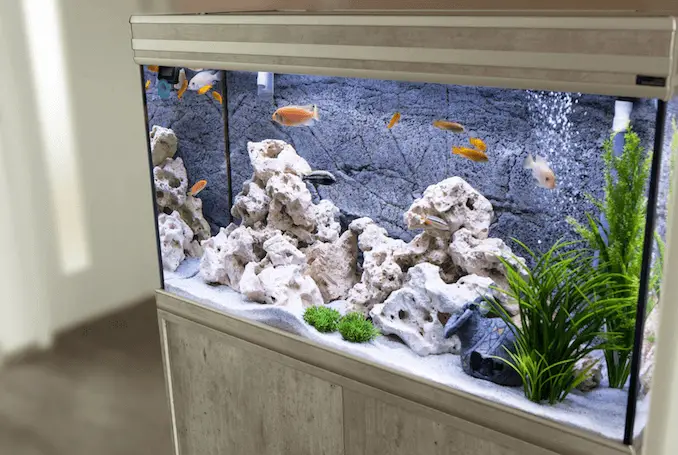
Before we begin to take a look at techniques to clean your fish tank, we are going to take a look at the regular daily and weekly maintenance tasks you should undertake to ensure your tank remains in a healthy condition in between cleans.
Daily Tank Maintenance
These daily chores will only take a few minutes and make all the difference to maintaining a healthy tank.
- Feed your fish twice a day and remove any uneaten food after a period of five minutes (this will stop any uneaten food from breaking down and affecting the water quality).
- Have a quick check over all the fish in your tank (i.e. are they all behaving normally, no injuries, and disease free?).
- Check the water temperature and the specific gravity of the water (by monitoring these two parameters daily, you can quickly and easily rectify any adjustments).
Weekly Tank Maintenance
- Water checks – pH, nitrate, nitrite and ammonia levels, and salinity (in saltwater tanks). You can either have your water tested at your local fish store or just buy a home testing kit. Home kits are extremely simple to use, they are color-coded strips of paper that help you to determine the levels in your tank.
- Brief check over your equipment – the filter, lights etc. This only needs to be a quick check to ensure everything is working properly, the rest can be done during the tank clean.
How Often Should You Clean Your Tank?
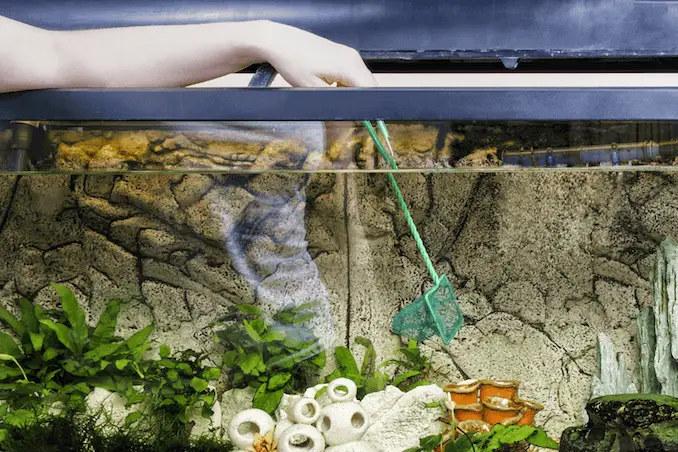
The amount of water you need to replace, and the regularity of your water changes will entirely depend on the size of your tank, and the amount of fish you have in there.
As a guideline, you should aim to give your freshwater tank a partial water change of 10-20% every 2 – 3 weeks.
For a saltwater tank, you should change 10% of the water every week for the first year of keeping the aquarium, you can then follow a similar guideline to freshwater tanks.
If you maintain your tank correctly, you should never need to do a full water change, in fact, by doing this; you will be removing all the bacteria which are essential in breaking down the waste your fish create.
The more fish you have, the larger the bio-load and the faster the water needs changing; the same goes for smaller tanks as the water becomes unstable.
During the first few months of keeping fish, you should monitor the water conditions of the tank regularly.
You’ll start to get a good idea as to how often your tank should be cleaned when you keep a record of all the parameters.
The parameters depend entirely on the species which you are keeping, but you can use the parameters below as a guideline.
Remember different species have more specific requirements so you should always research the fish, corals or invertebrates that you are keeping in your aquarium to check the acceptable parameters.
Freshwater Parameters
| Parameter | Freshwater | Brackish | Pond |
| Temperature | 72 – 82oF | 72 – 82oF | 33 – 76oF |
| pH | 6.5 – 7.5 | 7.5 – 8.4 | 6.5 – 7.5 |
| Alkalinity (Carbonate Hardness) | 4 – 8 KH | 10 – 18 KH | 4 – 8 KH |
| General Hardness | 4 – 12 GH | 12 – 20 GH | 4 – 12 GH |
| Ammonia | 0.0 | 0.0 | 0.0 |
| Nitrate | 0.0 | 0.0 | 0.0 |
| Nitrate | <50 ppm | <50 ppm | <50 ppm |
Saltwater Parameters
| Parameter | FOWLR Aquarium | Reef Aquarium | Coral Reef |
| Temperature | 72 – 82oF | 72 – 82oF | 82oF |
| pH | 8.1 – 8.4 | 8.1 – 8.4 | 8.0 – 8.5 |
| Alkalinity (Carbonate Hardness) | 8 – 12 dKH | 8 – 12 dKH | 6 – 8 dKH |
| Specific Gravity | 1.020 – 1.025 | 1.023 – 1.025 | 1.025 |
| Ammonia (NH3) | Undetectable | Undetectable | Near Zero |
| Nitrite (NO2) | Undetectable | Undetectable | Near Zero |
| Nitrate – Nitrogen (NO3) | <30 ppm | <1.0 ppm | 0.25 ppm |
| Phosphate (PO4) | <1.0 ppm | <0.2 ppm | 0.13ppm |
| Calcium | 350 – 450 ppm | 350 – 450 ppm | 380 – 420 ppm |
| Magnesium | 1150 – 1350 ppm | 1250 – 1350 ppm | 1300 ppm |
| Iodine | 0.04 – 0.10 ppm | 0.06 – 0.10 ppm | 0.06 ppm |
| Strontium | 4 – 10 ppm | 8 – 14 ppm | 8 – 10 ppm |
How to Clean your Tank in Five Easy Steps
- Preparation
- Water Removal
- Algae Removal
- Filter Cleaning
- Water Replacement
Step One – Preparation
Gather all the supplies you need; listed below.
Supplies You Will Need to Clean
- A siphon gravel vacuum
- Algae scraper/pad (we recommend a magnetic cleaner)
- Large bucket (make sure this is only ever used for cleaning your aquarium so households chemicals don’t get into your tank)
- New filter media (optional)
- Used clean towel/cloth
- Prepared water (the amount and type will depend on how much you need to replace and whether you have a saltwater or freshwater tank)
- Water testing kit
- Powerhead and heater (saltwater aquarium)
- A salinity probe (saltwater aquarium)
The majority of aquariums are too heavy to move, and so you’ll need a siphon that allows you to take water out of the tank and a bucket that allows you to bring replacement water to the tank.
Unplug all the electrical elements in your aquarium including; heater, filter, and any pumps.
Remove any large decorations or ornaments.
Top-Tip
Make sure you do this slowly and so you don’t stir up any debris at the bottom of the tank.
If you have artificial plants, you can remove them if they need a clean, but never remove live plants – this will disturb the root growth.
Step Two – Water Removal
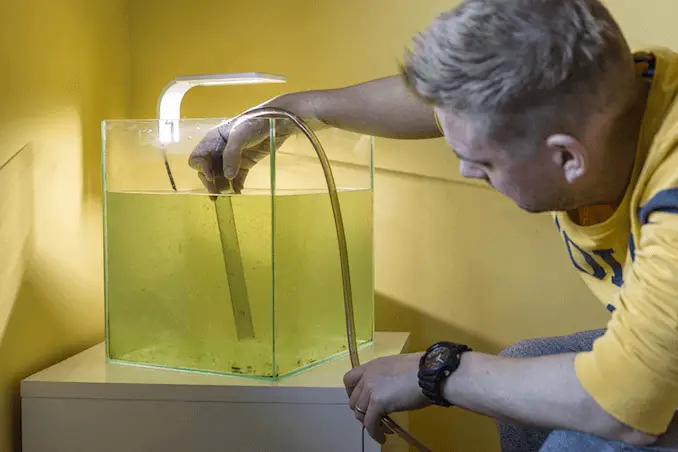
You’ll need to replace roughly 10-20% of the water in your aquarium every 2-3 weeks.
Use a siphon gravel vacuum, with an attached hose to clean the gravel and remove the water.
You should suck up small amounts of gravel using the siphon, the waste will then be sucked through the tube into the bucket along with some of the water, and the gravel will fall back into place.
Use your thumb to block the end of the tube to slow down the siphoning process, and make sure none of the gravel makes it into the tube.
Some siphons have a built-in regulator to control the flow of water, some also come with longer hoses so the water can be taken straight to the sink (if you don’t need to keep it to wash other equipment in).
Not only does this step remove the water, but it also cleans the gravel by removing plenty of the waste that has fallen into the substrate.
Step Three – Remove Algae
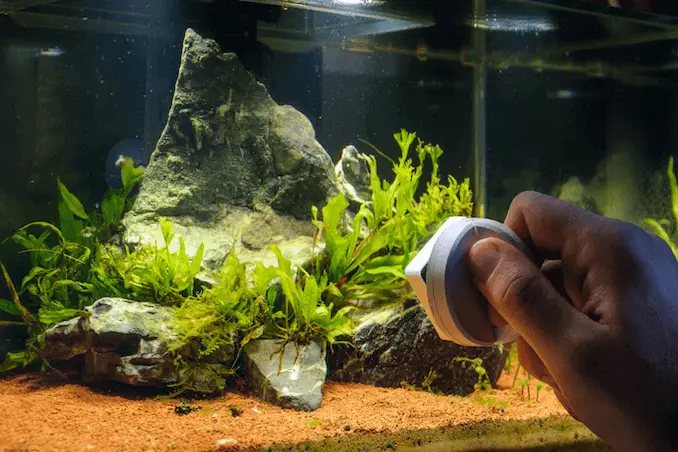
The easiest way to clean the glass in your tank is to use a magnetic algae cleaner.
A magnetic algae cleaner consists of two magnets with a soft felt covering. You place one magnet on the inside of the aquarium, and attach the other to the outside of the aquarium.
You then drag the outer magnet around the glass of the aquarium, and the inner magnets follow and gently remove the majority of the algae.
If you have an acrylic aquarium, be sure to choose a cleaner that won’t scratch the surface.
If you want to clean any of the other larger decorations you’ve removed (from step two), you can do this in the bucket of siphoned out water; using a clean soft-bristled toothbrush.
Never use soap or other cleaning products; this can be deadly to your fish.
You might also want to consider having a clean-up crew of algae eaters, which will eat some of the algae in the tank.
Step Four – Filter Cleaning
Depending on the type and quality of filter that you use, you will need to clean and sometimes change the medium in your water filter.
The most common type of filter is a sponge filter. To clean this, you should remove it and rinse it out in the bucket of water that you have removed from the tank.
Never run your filter under tap water, because it removes the beneficial bacteria which is has built up which is necessary for your tank.
Any other filters which act as a mechanical filter, as a sponge does (ceramic rings, filter fiber etc) should also be rinsed and returned as quickly as possible to avoid losing the bacteria colonies.
If your filter contains carbon, ammonia absorbers, or, ion-exchange resins it will need replacing every couple of weeks because it will no longer be able to absorb materials.
You should also clean the rest of the filter, including the tubing; use a filter brush for this.
Step Five – Water Replacement
Your aquarium now needs to be topped back up with water.
The type of water you add depends on whether you have a saltwater tank or a freshwater tank.
Freshwater Water Preparation
If you have time to prepare the water in advance, leave the tap water out for 24 hours in advance of cleaning your tank to allow the chlorine in the water to evaporate.
You’ll need to use a water conditioner to remove any of the heavy metals, chlorine and toxins which are harmful to fish.
By preparing your water in advance, this allows the water to reach room temperature too.
Saltwater Water Preparation
You’ll need to be more precise with water changes in saltwater tanks. You need to observe three parameters – salinity, temperature and pH.
For reef aquariums you’ll need RO/DI water (reverse osmosis and/or deionized water). You can buy this from your local fish store, or you can buy a system which produces RO-DI water. Ideally you should use this water for any type of saltwater tank.
You should only use tap water if your local supply is excellent, and even then, tap water should only be used for fish-only aquariums. If you have to use tap water, have it tested for TDS (total Dissolved Solids) this reading should be zero, but anything less than 10 is OK.
You’ll need to dechlorinate the water and then add a salt mix. There are lots of different options available, so make sure you choose a quality and reputable brand. Follow the instructions according to the product you choose.
Most salt mixes will need to be added to warm water which is moving. You can do this with a powerhead and a heater.
You should leave the water over night before adding it to the aquarium, to allow the salt to completely dissolve.
Always make sure the temperature and salinity of the water is as similar as possible before you put in back into the aquarium; this avoids sudden changes in your tank.
Check the water parameters in your aquarium after a couple of hours, and also check that the water is not cloudy.
Finally, you can clean the exterior of your tank just using an aquarium approved glass cleaned and a cloth.
Fish Tank Cleaning FAQs
How do I clean a used fish tank?
The tank should be completely empty before you clean it. You’ll need salt, vinegar and some soft scrubbing pads.
The vinegar and salt will remove any hard water stains and fishy smells. Make sure you rinse the tank thoroughly before adding any water to it.
Once the tank has had a thorough clean, fill it up with water to check there are no leaks. If you do find leaks, you can use aquarium sealant.
How do I clean a fish tank which has eggs in it?
If the eggs were laid in the gravel, you can go ahead with your usual clean but just avoid the gravel areas until the eggs have hatched and the fry are swimming.
If they have been laid anywhere else – just avoid that area during your clean up and don’t expose them to air.
Most eggs hatch within a week so they shouldn’t really affect your cleaning schedule.
Should I ever remove my fish?
Unless you have a very small tank or bowl, you do not need to remove your fish while you’re doing water changes.
Fish do not like being disturbed and removing them can cause stress. If you absolutely have to, keep them in the same water as their aquarium.
Ideally, you should do much more frequent partial water changes even with a small aquarium or bowl.
Summary
Cleaning your aquarium should not be a laborious task, the key to keeping your aquarium clean is regular and ongoing maintenance.
Partial water changes are one of the most important aspects of ensuring your fish stay healthy and happy.
Making partial water changes ensures that the bacteria colonies, which are essential for your aquarium, are not removed or damaged.
It’s not a difficult task; just follow the steps we have provided!

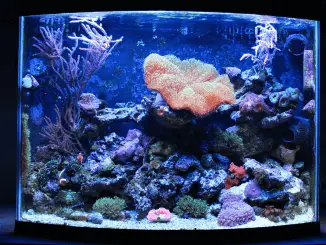
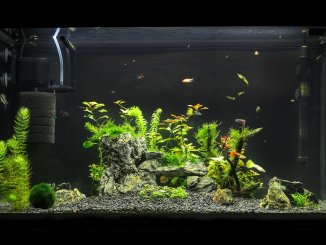
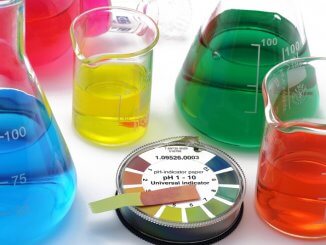
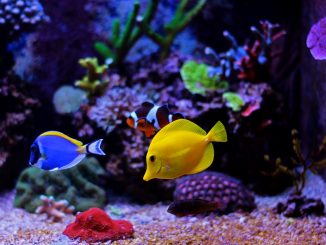
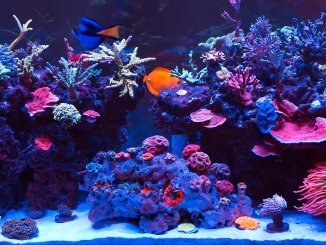
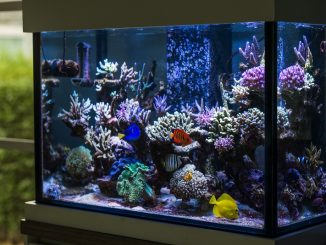
I new to getting fresh water fish, I have a 38 curve
Tank. Trying to make a decision on what kind of fresh water fish in my tank. From gravel/sand to plants
Then the fish. So am looking for some ideas. Am looking to mate them, I am looking not to clean my tank to often.
I am looking in some suggest from here
Hi Pamela,
What are you looking for from your tank? Do you want it to be pleasing to the eye or is it just for breeding?
You won’t be able to avoid not cleaning your tank very often, almost all tanks require partial water changes every few weeks at the very minimum.
Thanks, Robert
Is it safe to use a gravel vacuum when I have shrimp in the tank?
Hi Oscar, as long as your shrimp are visible a gravel vacuum will be fine, if you have ghost or glass shrimp, I’d avoid using a vacuum. Thanks, Robert
Hi,
I’m a beginner looking to get my first tank and due to living arrangements I need to keep it small so about 20-40L. Ideally I wouldn’t want to ever do a complete water change or remove the fish for cleaning, does this sound reasonable?
Also with the gravel cleaner, is it safe to use this with fish in a small tank?
Hi Katie, yes this is fine. You never want to complete a full water change because it destroys the bacteria bed which has built up. A 30-40% water change each week will be fine. A gravel cleaner should be fine, just move carefully! Thanks, Robert
Hi. Do I need to buy a water heater for a 4 gallon tank that contains guppies?
Hi Natasha, a 4 gallon tank is too small for Guppies. You’d probably be better off with a 10 gallon tank. You’ll need a heater in whatever setup you decide on. Thanks, Robert
Chloramine does not evaporate. Use of prime or other chlorine remover water conditioner is necessary for the safety of the fish.
I just purchased a house that has an outside large fish tank with about 20 gold fish in it. I have no experience with fish and tanks. I read your article above, but it seems to apply to indoor tanks. One thing I noticed was water temperature being in the low 70’s. Last week we had a cold snap here in Charleston, SC and the water temperature went to the low 40’s. Tank has no heater. I noticed the fish did not come to the top at 0700 when I went to feed them, but rather stayed on the bottom. I went to Petco and purchased food that eventually floats to the bottom to feed them for a couple days. I am concerned as to how to properly take care of them. Cleaning tank, feeding, etc.
I have a couple of jugs that I keep water in so that the water is room temperature for when I clean the fish tank and add new water. If I put conditioner in the water, should I be leaving the cover off of the containers?
I was trying to keep a fish in the aquarium. But it doesn’t work well. But the water is dirty and every time I want to change the fish, one or two will die. This contaminates the water in the tank and, very quickly, can kill other fish. Any advice on cleaning the fish tank after the fish die?
All good information to know. I’m embarrassed to say that after having my 29 gallon fresh water tank for about 6 years now, I’m going to finally do a serious water change. I NEVER changed the tank water even partially. I’ve been recently losing some of the fish that I recently purchased because something in the water is not right. So I bought one of those ph/nitrates and etc. home testing kits. I will start this cleaning project very soon. Thanks for all the information.
Hello. I have a 30-gallon tank. I haven’t set up the tank yet because we moved to a new house and the Phyton 50ft tube to vacuum rocks, and remove/add water, does not fit the new faucet in our new home. What do you recommend to clean the tank?